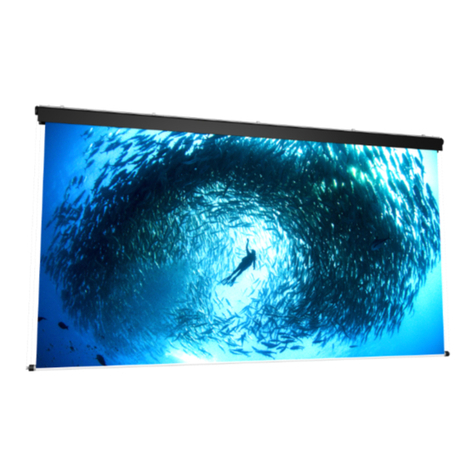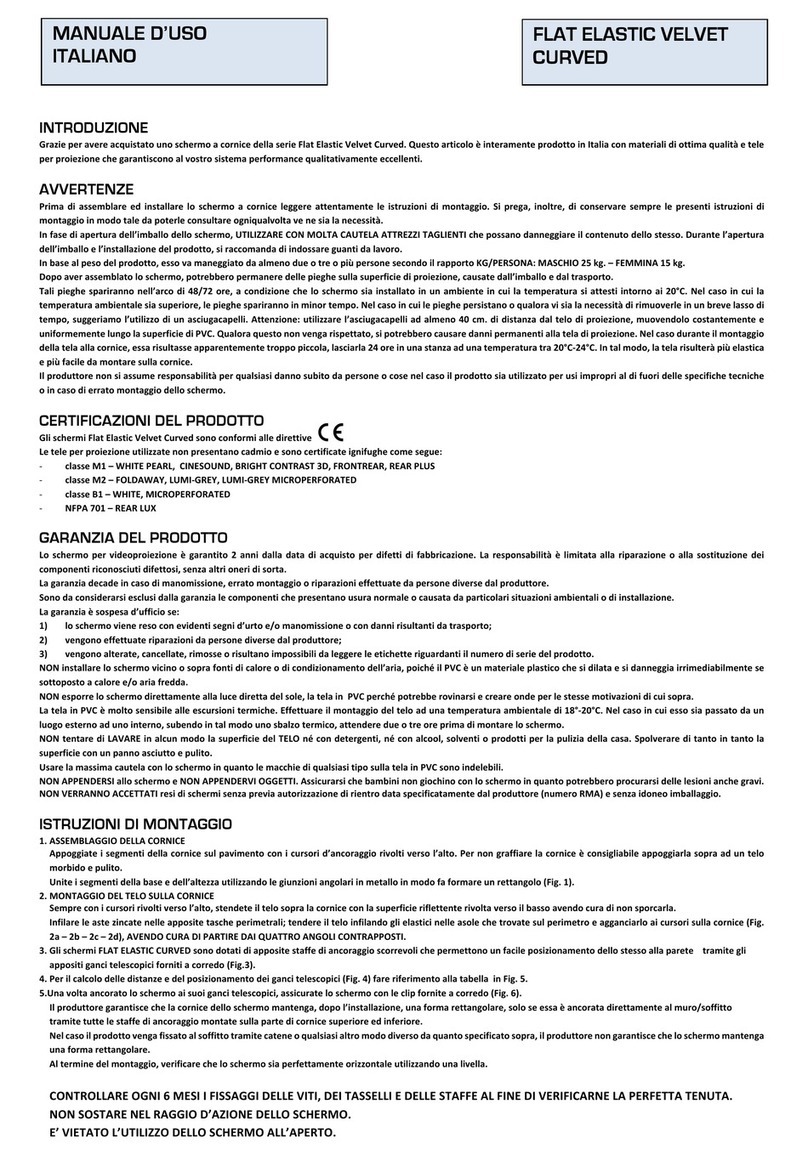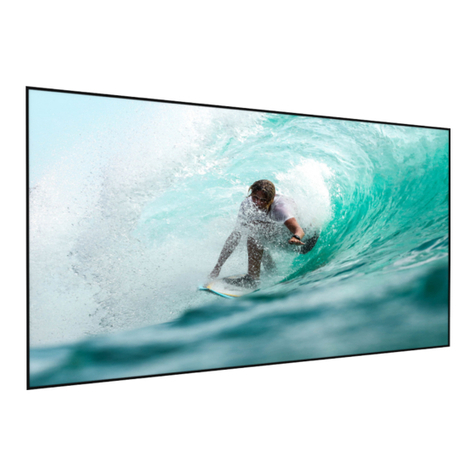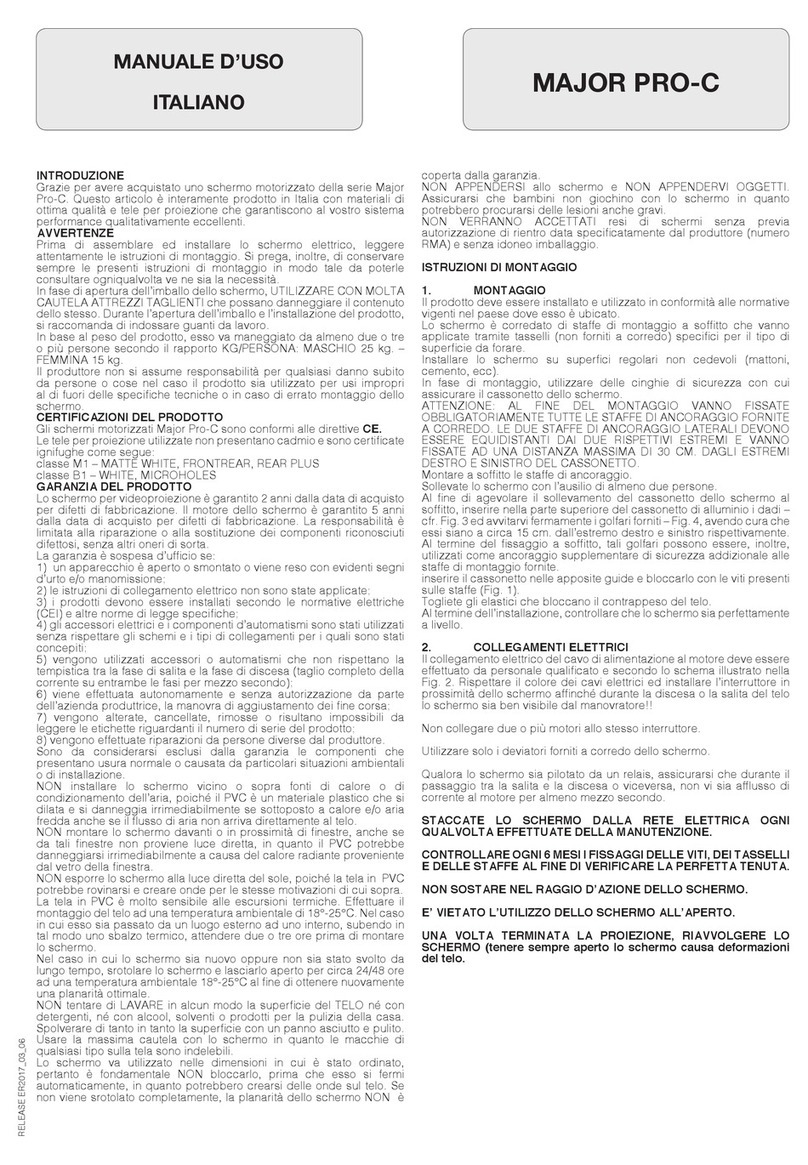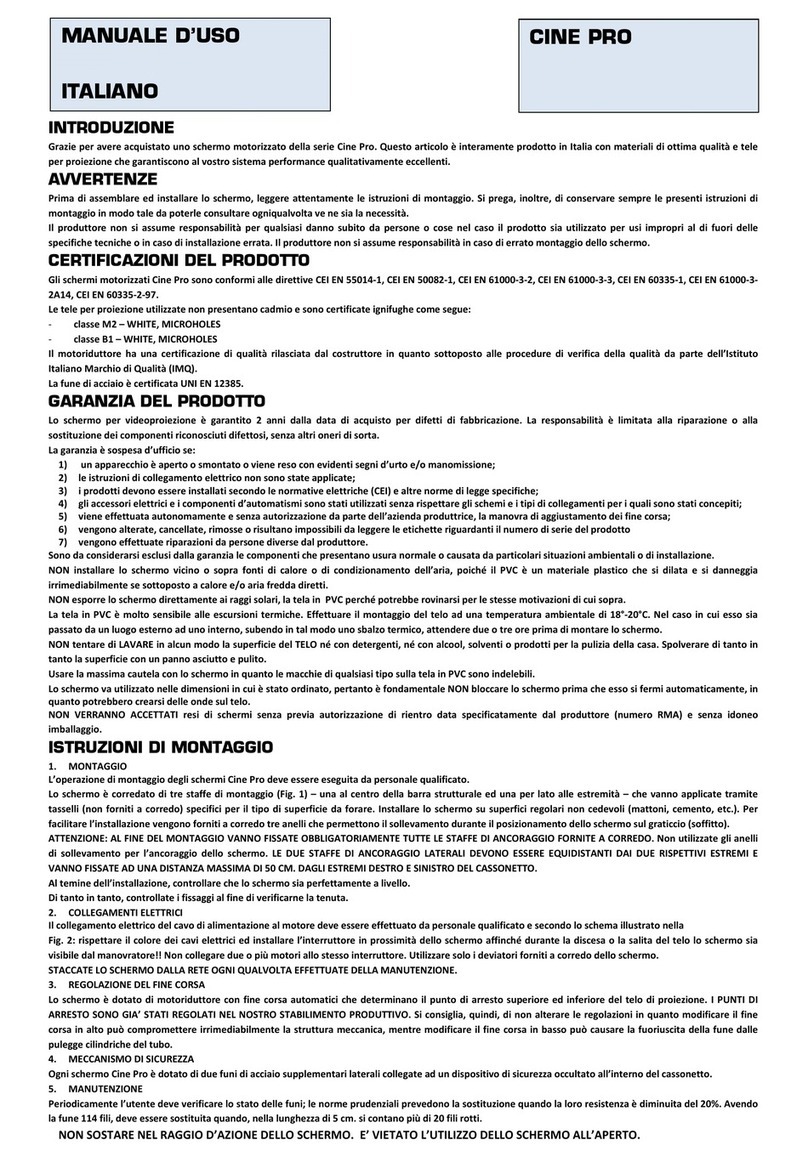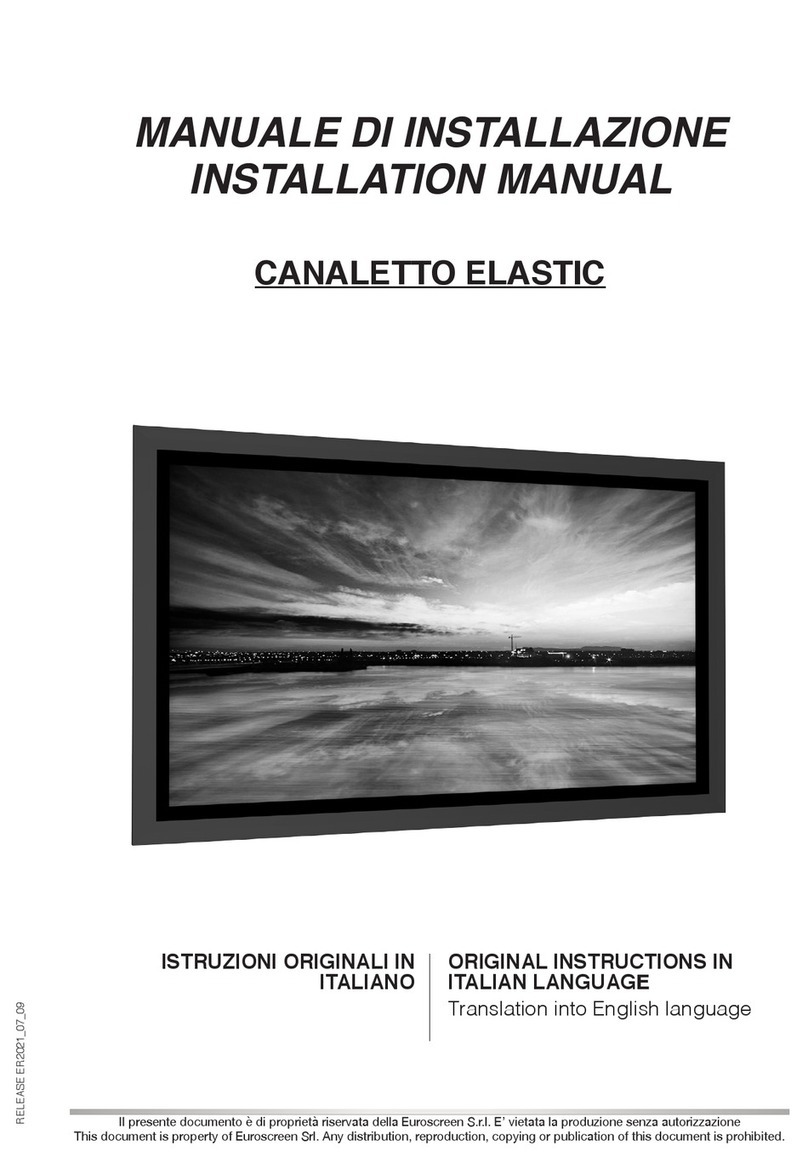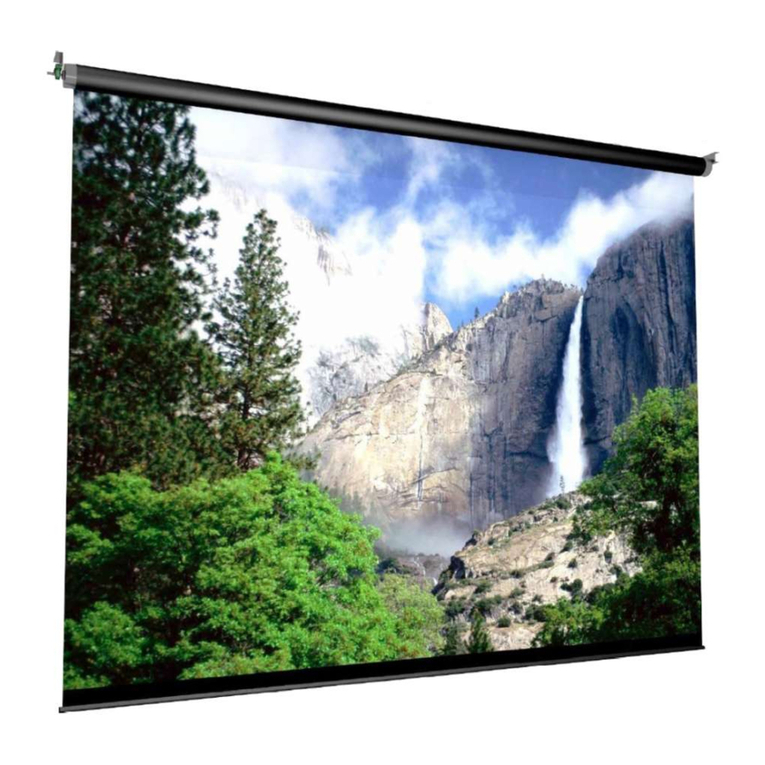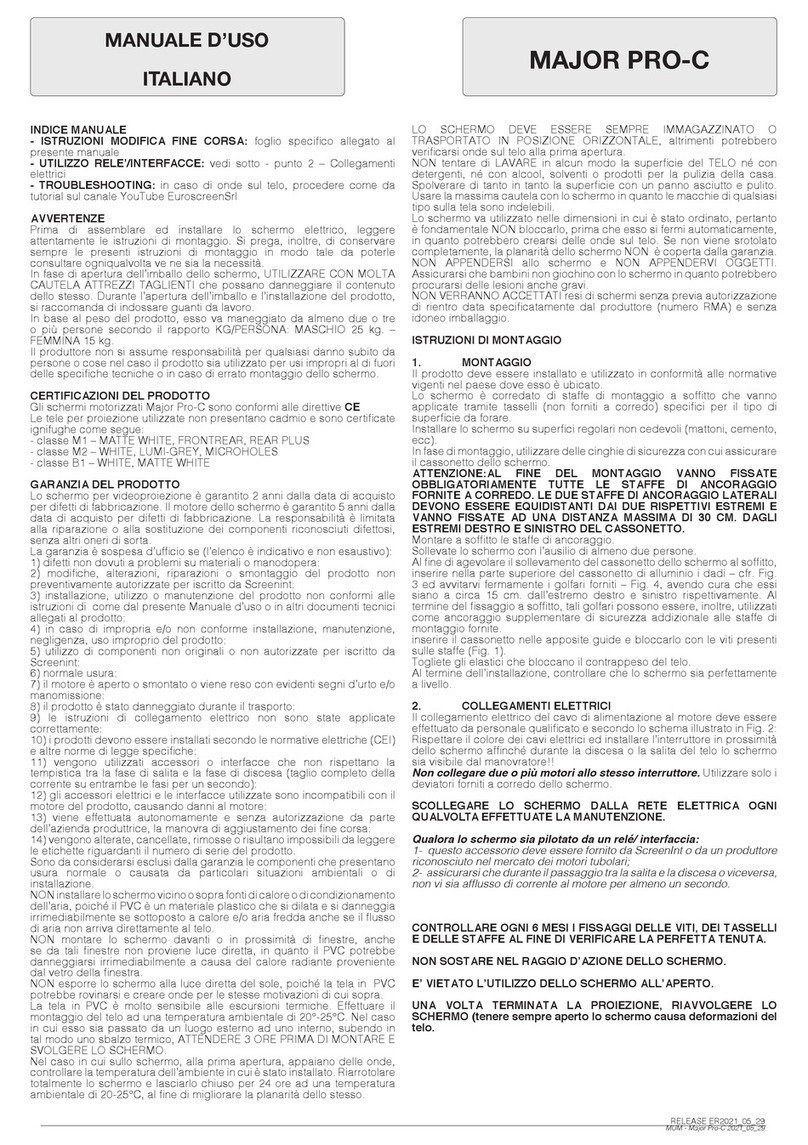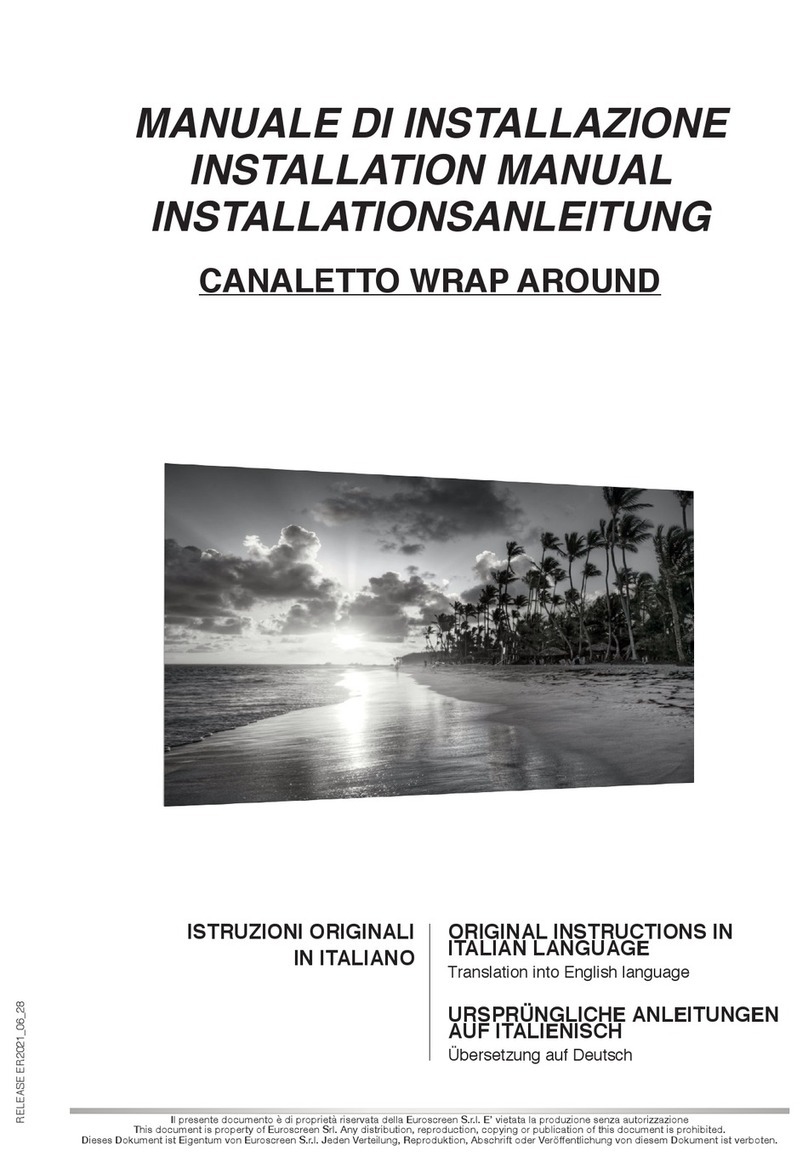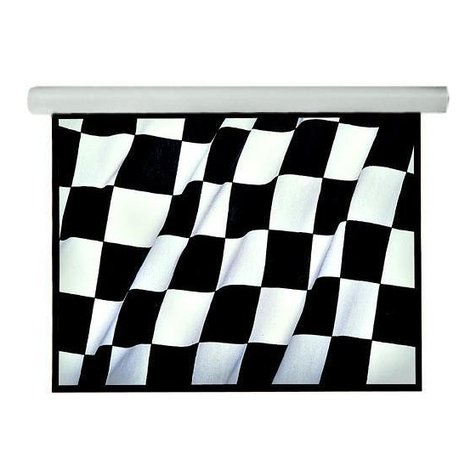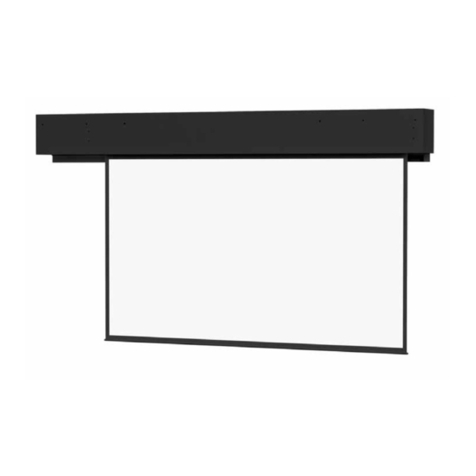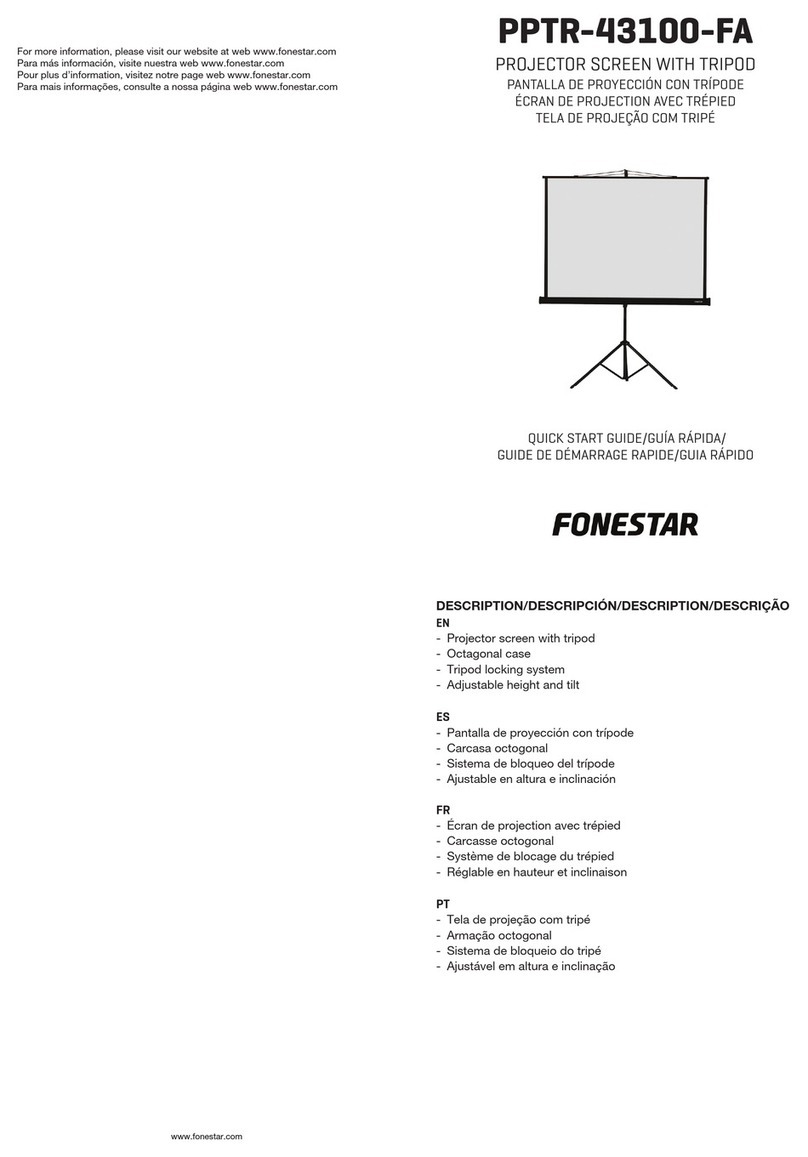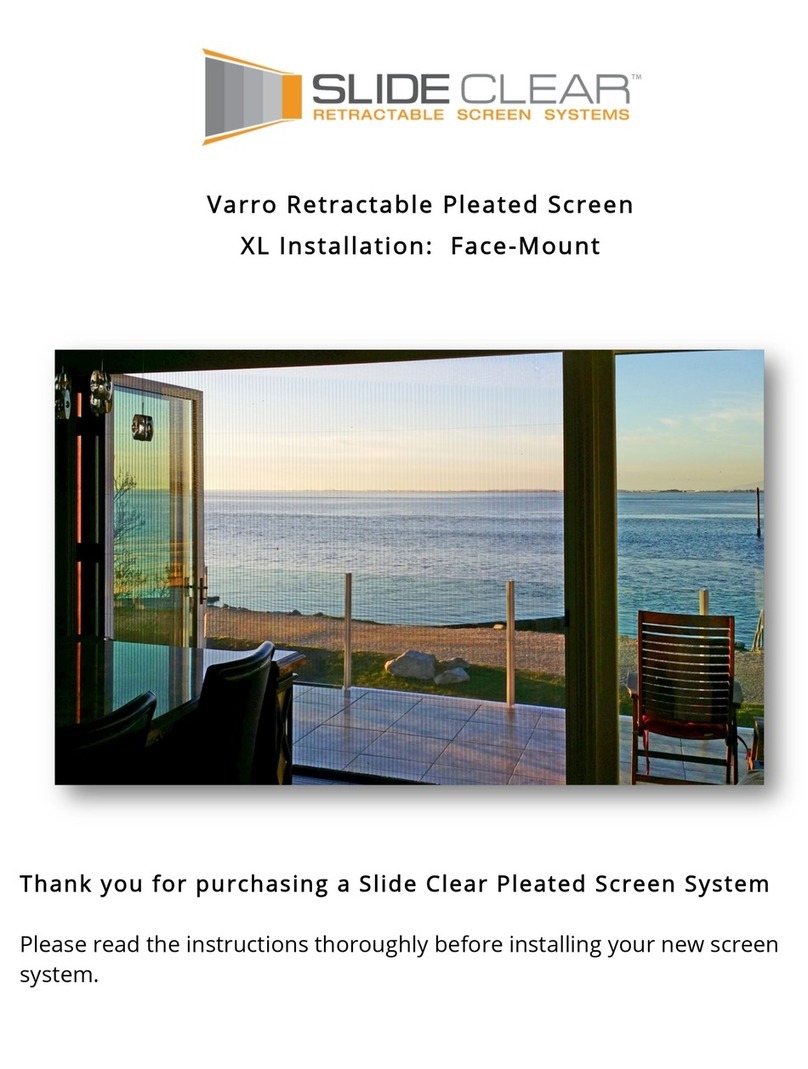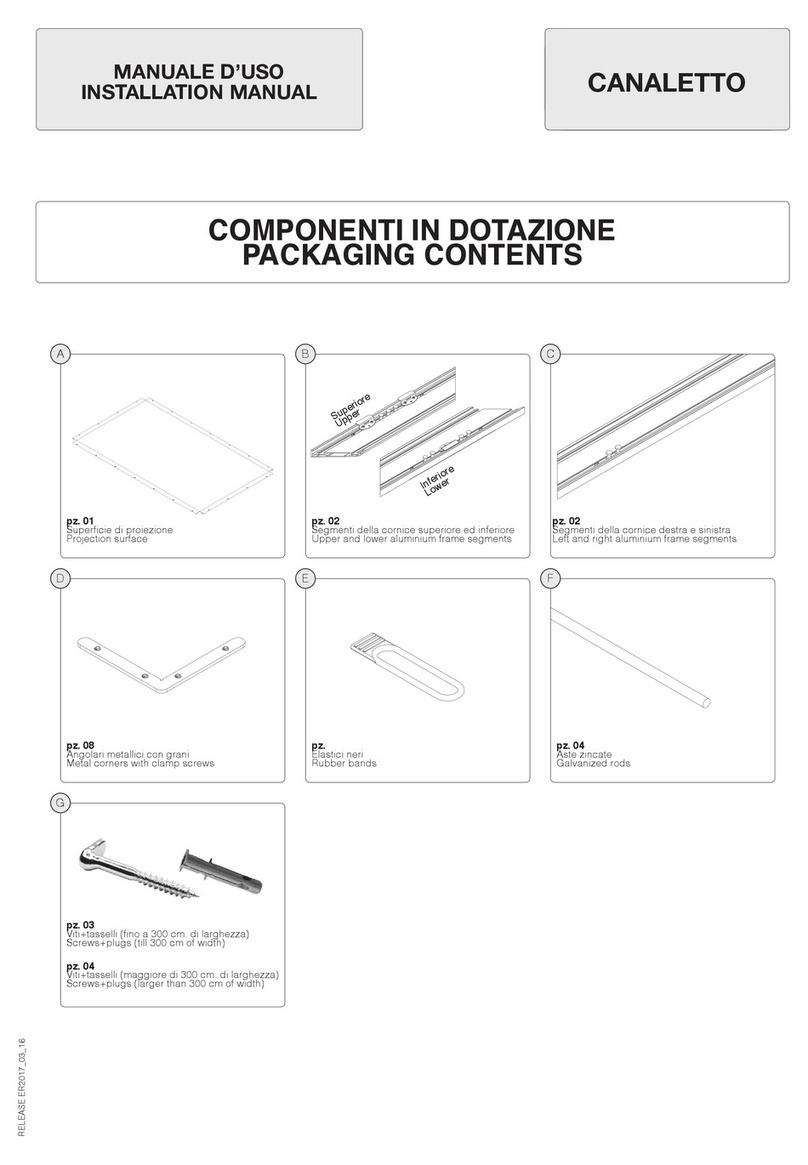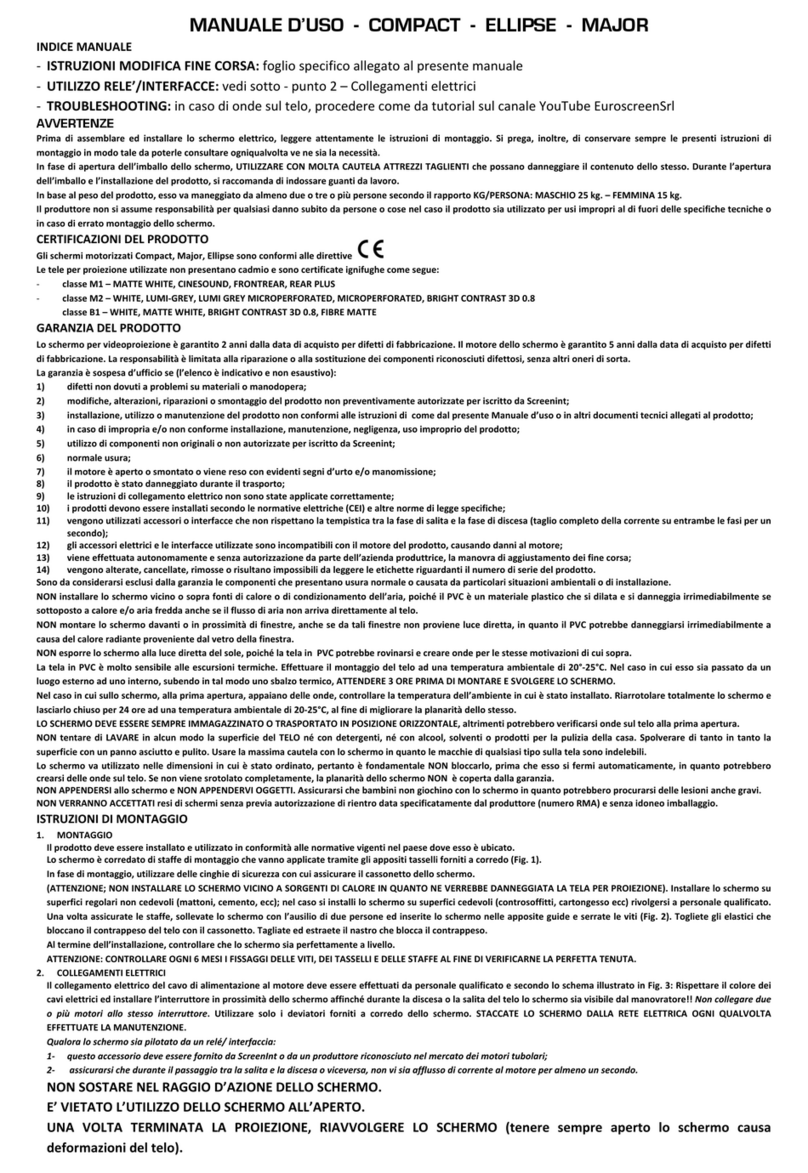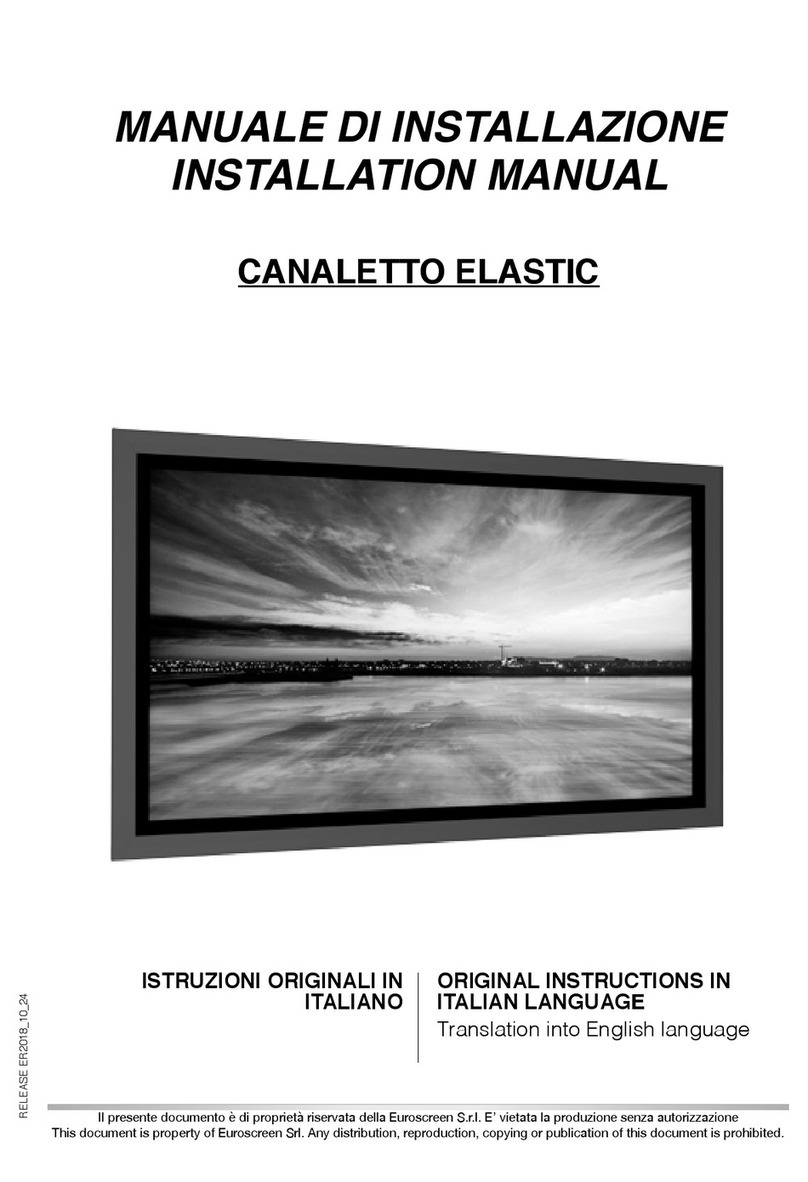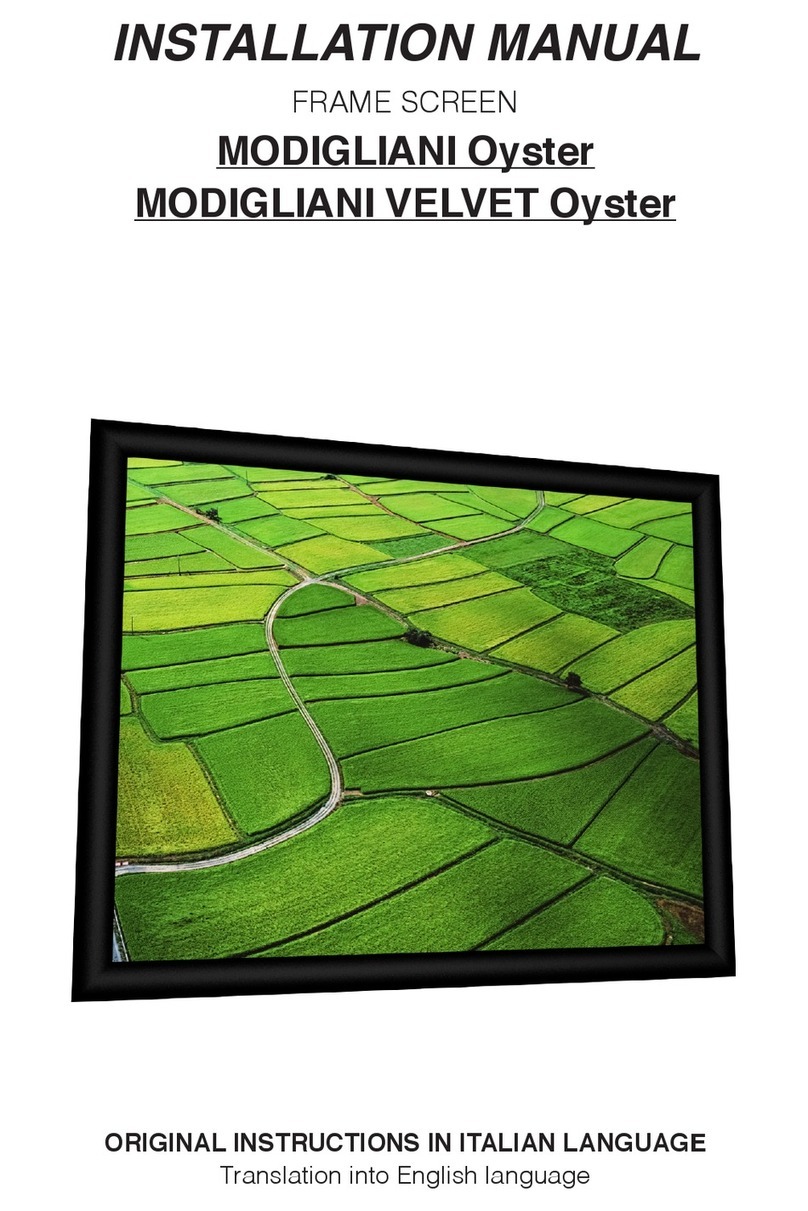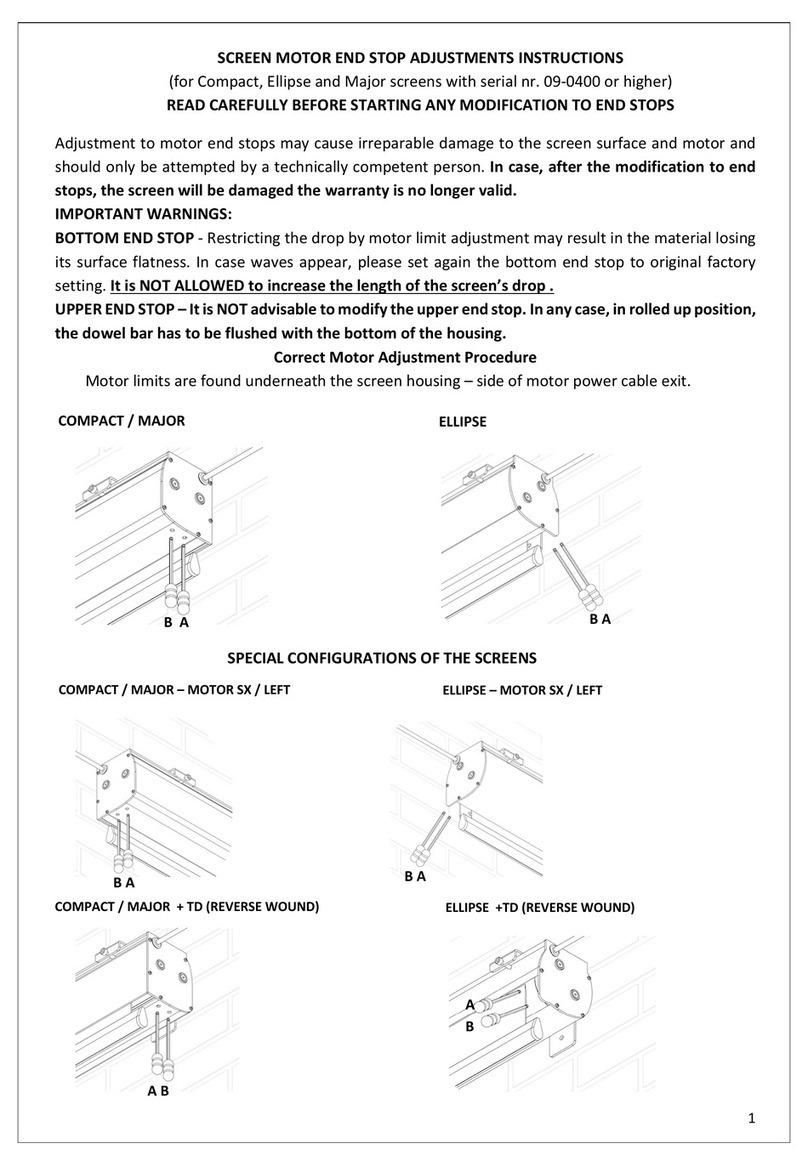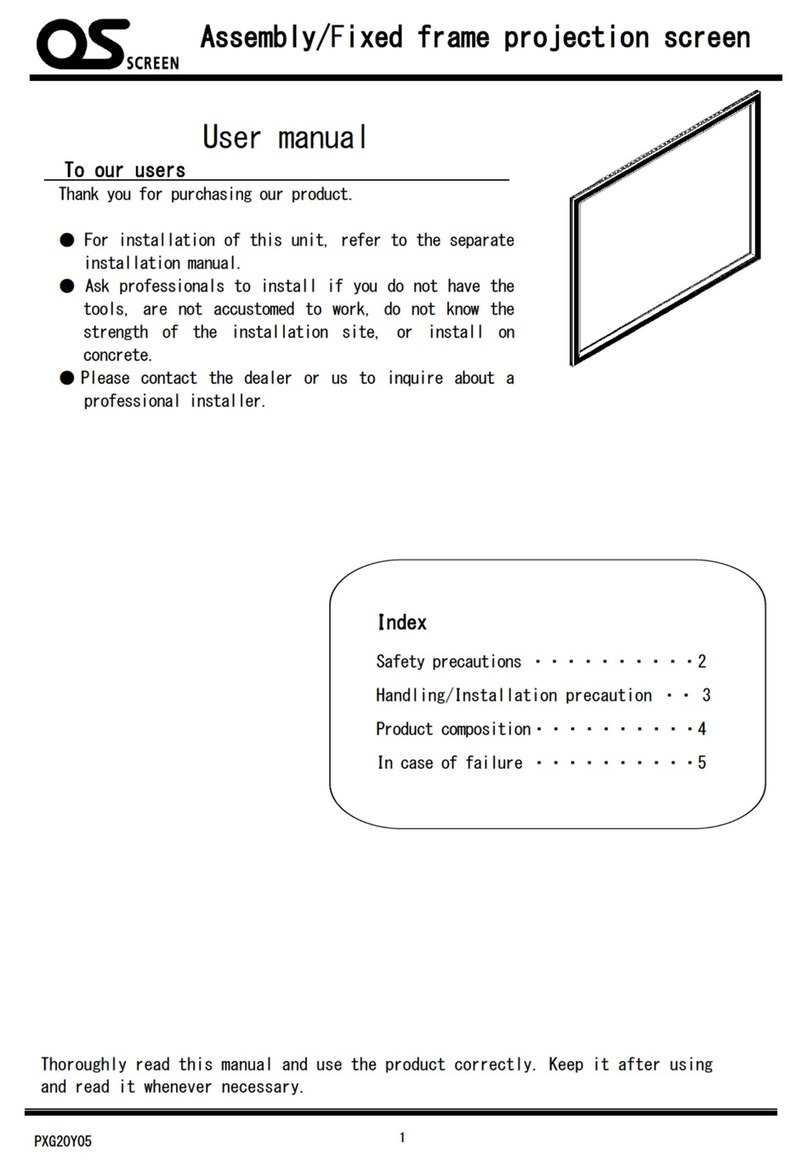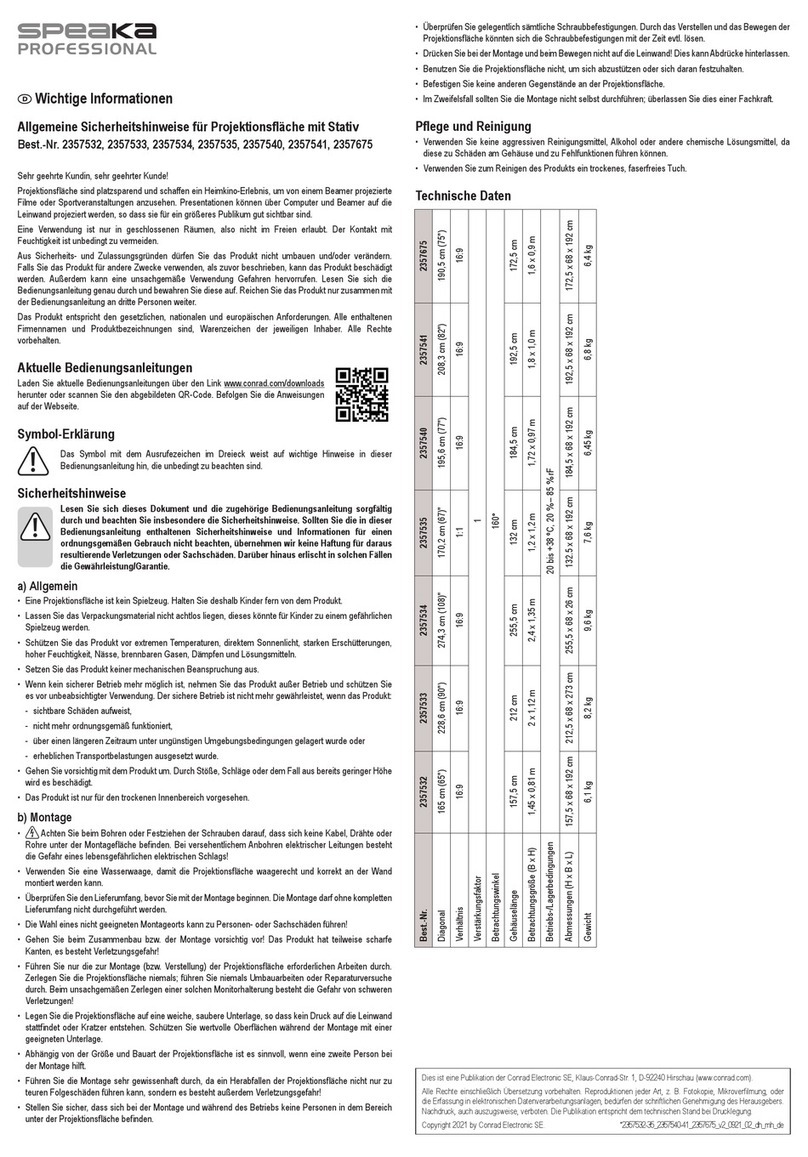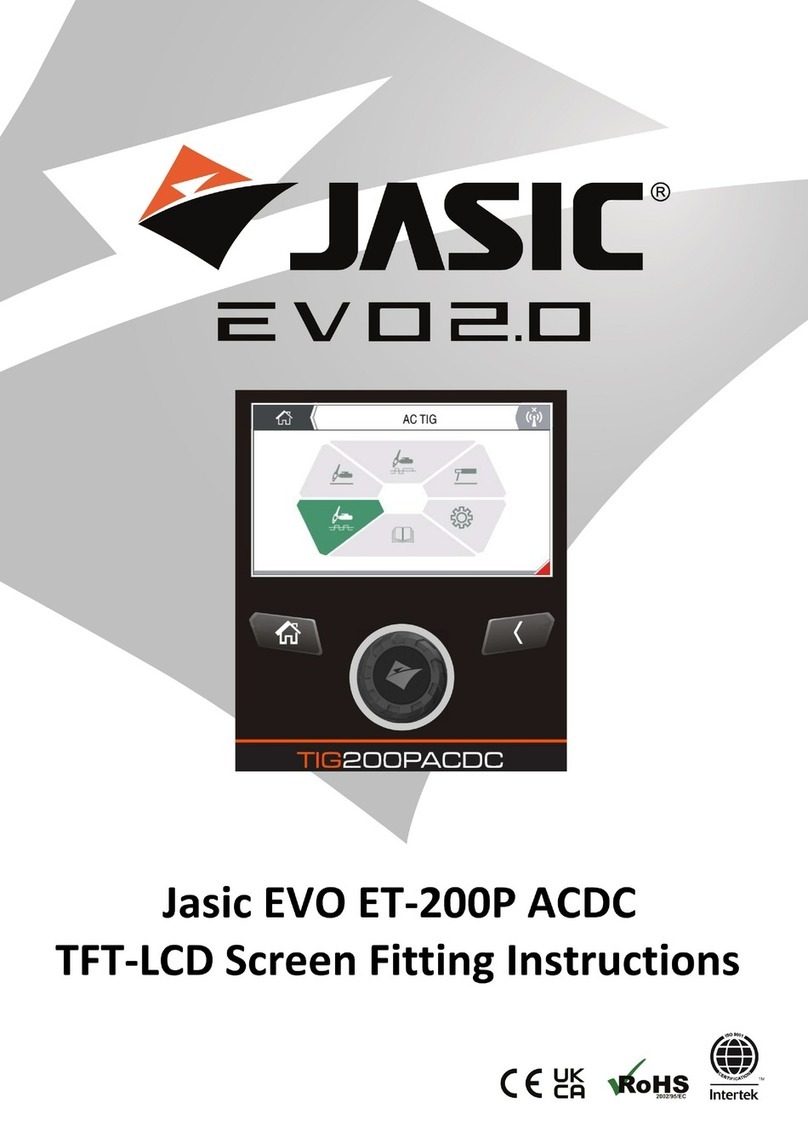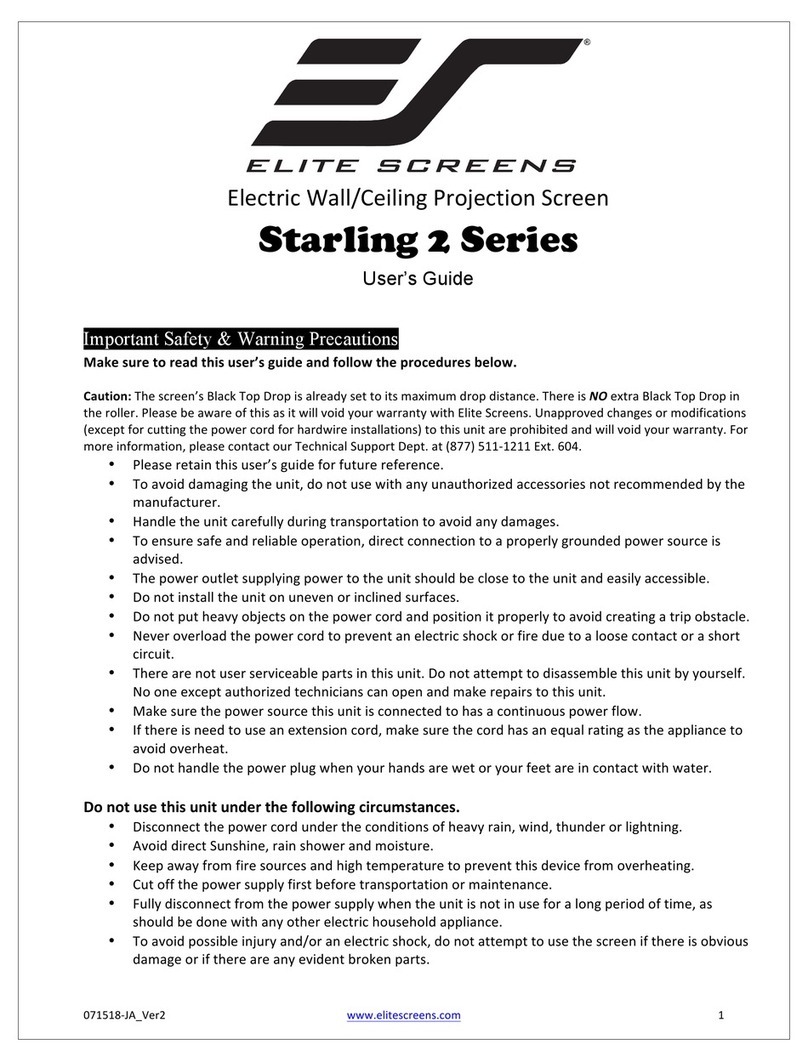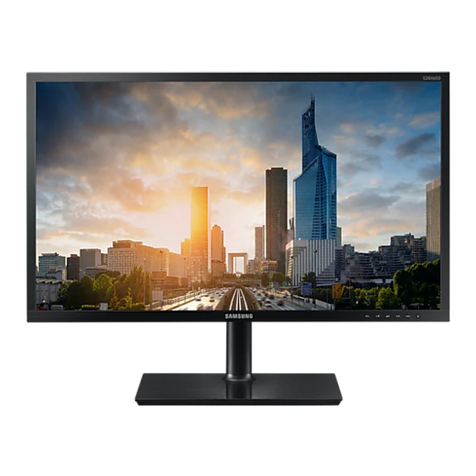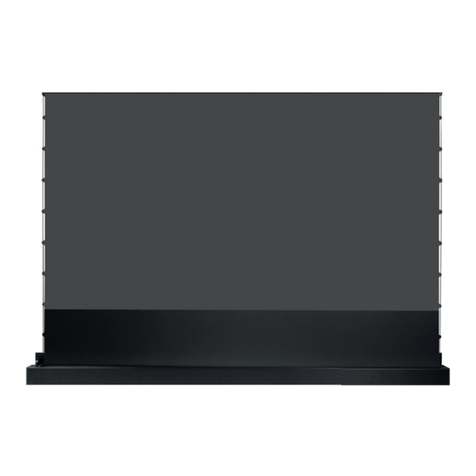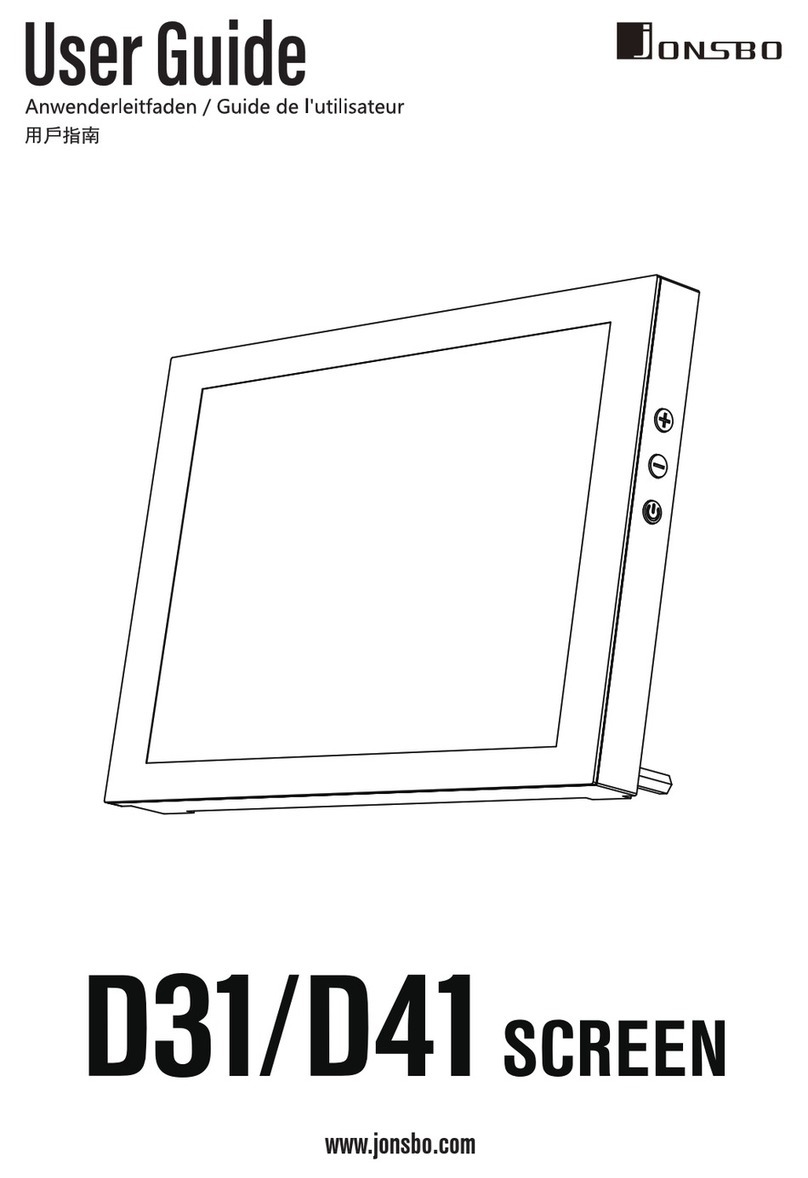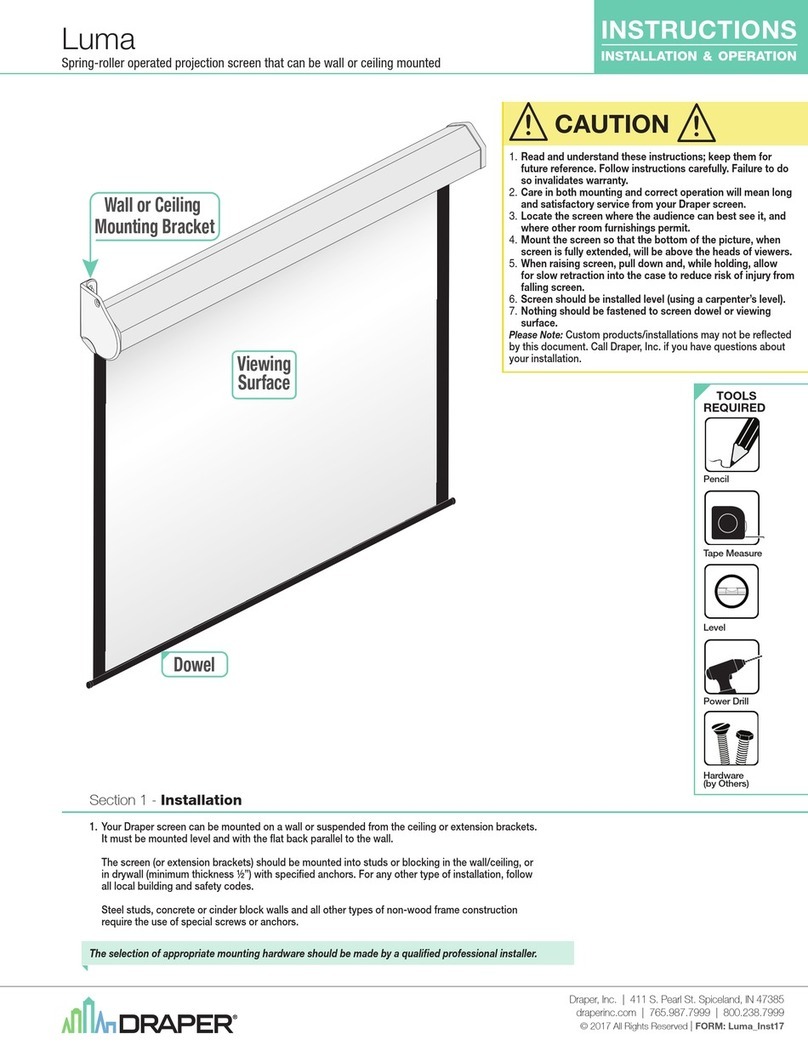
RELEASE ER2021_05_29
MUM-FlatElastic_Press2021_06_03
BETRIEBSANLEITUNG
DEUTSCH
EINFÜHRUNG
Danke für den Kauf einer Rahmenleinwand Flat Elastic und Flat Press.
Diese Artikel wurden in Italien mit hervorragender Qualität und hochwertigen
Projektionstüchern für eine sehr gute Performance produziert.
AUFMERKSAMKEIT
Bevor Sie die Rahmenleinwand zusammenbauen, lesen Sie bitte die
Montage Bedienungsanleitungen. Bitte bewahren Sie diese Montage
Bedienungsanleitungen auf.
Zum Öffnen der Verpackung keine Teppichmesser oder spitzen Gegenstände
verwenden. Beim Öffnen der Verpackung, sowie bei Installation und Handling
des Produktes immer Schutzhandschuhe tragen. Das Produkt muss je nach
Gewicht von mindestens zwei, drei oder vier Personen befördert werden
(Richtwerte für die Last pro Person: 25 kg Männer - 15 kg Frauen).
Nach der Montage der Leinwand besteht die Möglichkeit, dass dieselbe noch
durch Verpackung hervorgerufene Falten aufweist. Diese Falten glätten sich im
Laufe von 48/72 Stunden, sofern die Leinwand in einem Raum mit Temperaturen
von mindestens 20°C installiert wird. Je höher die Raumtemperatur, desto
schneller glätten sich die Falten bis sie dann endgültig verschwinden. Bei
besonders hartnäckigen Fällen bzw. sofern der Bedarf besteht, die Falten
binnen kurzer Zeit zu glätten, ist die Verwendung eines Föhns empfehlenswert.
Achtung: Bei Missachtung folgender Hinweise kann die Leinwand durch die
Verwendung eines Föhns unwiderruich beschädigt werden. Der Abstand
zwischen Fön und Leinwand darf NICHT unter 40/50 cm liegen. Der Föhn muss
ständig über die gesamte Faltenäche bewegt werden.
Das Projektionstuch muss in den Rahmen gespannt werden. Je nach
Temperatur kann das Tuch den Anschein machen zu klein zu sein. Ggf. das
Tuch 24 Stunden in einem temperierten Raum liegen lassen (~ 20-25°C).
Der Produzent ist nicht verantwortlich für Personenschaden oder Sachschaden,
wenn das Produkt für unpassende Aktionen eingesetzt oder falsch installiert
wurde. Der Produzent ist nicht verantwortlich, wenn die Leinwand falsch
installiert wurde.
ZERTIFIZIERUNGEN
Die Leinwände Flat Elastic und Flat Press entsprechen nach den CE Normen.
Die Projektion Tuchen die wir benutzen sind kadmiumfreiem und feuerfest:
• Gruppe M1 – FRONTREAR, REAR PLUS, MICROPERFORATED,
• Gruppe M2 – WHITE, LUMI-GREY, LUMI GREY MICROPERFORATED,
BRIGHT CONTRAST 3D 0.8, FOLDAWAY
• Gruppe B e B2 – HD PERFORMER
• Gruppe B1 – WHITE, BRIGHT CONTRAST 3D 0.8, FIBRE MATTE
• Gruppe NFPA 701 – REAR LUX R114
GARANTIEBEDINGUNGEN
Gegen Herstellungsfehlern dieser Leinwand wird ab Kaufsdatum für 2 Jahre
Garantie gegeben.
Der Hersteller garantiert nur die Reparatur oder den Austausch der Teile, ohne
die Verpichtung weitere Kosten zu tragen.
Dieser Garantie erstreckt sich nicht auf Schäden aufgrund von Reparaturen
oder Anpassungen durch zur Reparatur nicht befugte Firmen oder Personen,
oder Montage nicht gemacht wie beschrieben in unsere Anleitung. Reparaturen
müssen von einem ScreenInt zugelassenen zertizierten Ingenieur durchgeführt
werden
Dieser Garantie erstreckt sich nicht auf (alle folgenden Fälle sind einschließlich,
aber nicht beschränkt) :
1) Mängel, die nicht auf Material- oder Verarbeitungsfehler zurückzuführen sind;
2) Ergänzungen, Änderungen, Reparaturen oder Demontagen des Produkts,
die zuvor nicht schriftlich von Screenint genehmigt wurden;
3) Installation, Verwendung oder Wartung des Produkts, die nicht den
Anweisungen von Screenint gemäß diesem Betriebsanleitung und / oder
anderen technischen Unterlagen entsprechen, die zusammen mit dem Produkt
geliefert werden;
4) Schlecht und / oder unsachgemäß und / oder nicht in Übereinstimmung mit
Installation, Wartung, Fahrlässigkeit, unsachgemäßer Verwendung;
5) Verwendung von nicht originalen Ersatzteilen oder nicht schriftlich von
Screenint genehmigt;
6) normale Abnutzung;
7) Der Leinwand wurde während des Transports beschädigt;
8) Veränderungen, Unleserlichkeit oder Entfernung der Seriennummer Etikette
auf dem Produkt.
Die Leinwand darf nicht oben oder in der Nähe einer Hitzequelle oder Kühlung
installiert werden, da in diesem Fall Wellen in dem PVC Tuch entstehen und
dass Tuch bleibend beschädigt wird.
Auf oder hinter das Leinwandtuch darf nicht direktes Sonnenlicht scheinen, da
in diesem Fall Wellen in dem PVC Tuch entstehen und dass Tuch bleibend
beschädigt wird.
Das PVC Tuch ist sehr empndlich auf Temperatur-Schwankungen. Im Fall,
dass die Leinwand aus einer kalten Umgebung kommt, bitte warten Sie
drei Stunden bevor Sie mit der Montage anfangen. Es ist wichtig, dass das
Leinwandtuch auf Zimmertemperatur ist.
DER LEINWAND MUSS IMMER IN HORIZONTALER POSITION AUF LAGER
UND TRANSPORTIERT WERDEN.
Das PVC TUCH darf NICHT mit Waschmitteln, Lösungsmitteln oder Alkohol
gereinigt werden. Man darf nur das Tuch abstauben mit ein trocken Baumwollen
Tuch.
Vermeiden Sie das Beecken von der Projektions- Leinwand, da es fast nicht
möglich ist Flecken aus dem PVC Tuch zu reinigen.
Die Leinwand muss bis zum Anschlag herunter gelassen werden (das ist
entsprechend der Maß angegeben auf der Verpackung), da sich sonst Wellen
bilden. Leinwände sind stets so konzipiert, dass diese ganz ausgefahren werden.
Eine Leinwand regelmäßig nur teilweise auszufahren, kann die Planlage negativ
beeinussen. Entsprechende Schäden unterliegen nicht der Garantie. Hängen
Sie sich nicht an die Leinwand, und hängen Sie keine Objekte an die Leinwand.
Stellen Sie sicher, dass kleine Kinder nicht mit der Leinwand spielen.
Wir akzeptieren nur Rucksendungen von Ware, die eine gute Verpackung
haben und auf die Verpackung unsere RMA Nummer geschrieben ist. Die RMA
Nummer musst vorab bei uns angefragt werden.
ANLEITUNG
1. ZUSAMMENBAU DES RAHMENS
Entsorgen Sie die Leinwand unter Beachtung aller örtlich geltenden Vorschriften.
Wo zutreffend müssen auch Unternehmensvorschriften befolgt werden.
Legen Sie die Teile des Rahmens (mit den beweglichen Befestigungen nach
oben) auf den Boden. Um den Rahmen nicht zu beschädigen, empfehlen wir
Ihnen, diesen auf einen weichen und sauberen Stoff zu legen. Verbinden Sie
die horizontalen und vertikalen Rahmenteile so, dass ein Rechteck entsteht.
2. AUFBRINGEN DES TUCHS AUF DEN RAHMEN
Legen Sie den Rahmen mit den beweglichen Befestigungen nach oben. Legen
Sie das Tuch auf den Rahmen mit der Projektionsoberäche nach unten, ohne
diese zu verschmutzen. Sollte Ihre Leinwand ein FLAT ELASTIC Model sein,
so stecken Sie die Zinkstangen in die dafür gedachten Taschen am Rand
des Tuchs (siehe Fig. 1). Hängen Sie die Gummibänder an die Schieber des
Rahmens um die Zinkstangen (siehe Fig. 2). FANGEN SIE hierbei MIT DEN
VIER ECKEN AN.
Falls Sie eine FLAT PRESS Leinwand gekauft haben, so befestigen Sie das
Tuch mit den Druckknöpfen an dem Rahmen. FANGEN SIE hierbei MIT DEN
VIER ECKEN AN.
Sofern es in Ihrem Projektionstuch eine Schweißnaht gibt, achten Sie bitte
darauf, das Tuch so auf dem Rahmen zu befestigen, dass sich die Schweißnaht
nach Montage im oberen Bereich der Leinwand bendet
3. ZUSAMMENBAU DER HÖHENVERSTELLBAREN STÄNDER
(optional)
Nach dem Zusammenbau der Leinwand öffnen Sie die höhenverstellbaren
Ständer, hängen Sie diese mit Hilfe der Klammern an die Seiten des Rahmens
(siehe Fig. 3) und ziehen Sie die Verschlüsse zu (siehe Fig. 3).
4. DECKEN- ODER WANDBEFESTIGUNG
Die Leinwände FLAT ELASTIC oder FLAT PRESS verfügen über Aufhängungen,
die eine bewegliche einfache Wandbefestigung ermöglichen (siehe Fig. 4a
und 4b). Mit den im Lieferumfang enthaltenen Schrauben, befestigen Sie die
beweglichen Aufhängungen an der Wand.
ALLE RAHMEN LEINWÄNDE SOLLTEN AUCH MIT EINEM MONTAGEBÜGEL
AM UNTEREN HORIZONTALEN RAHMENTEIL BEFESTIGT WERDEN.
Auch diese Montagebügel müssen mit einer „L“ förmigen Schraube an der
Wand befestigt werden. Damit soll vermieden werden, dass der Rahmen von
der Wand gezogen werden kann und dies soll die rechteckige Form garantieren.
Der Hersteller garantiert dass nach Installation der Leinwandrahmen rechteckig
ist nur im Falle, wenn die Leinwand mittels aller Montagebügel, die sich am
oberen und unteren Rahmenteil benden, direkt an der Wand montiert wird.
Falls die Rahmenleinwand durch Ketten an der Decke montiert wird oder auf
andere Weisen montiert wird, garantiert der Hersteller keine rechteckige Form
des Leinwandrahmens.
KONTROLLIEREN SIE JEDES 6 MONATEN DIE SCHRAUBEN, DUEBEL
UND DECKEN BEFESTIGUNGEN AN DER LEINWAND UND ZIEHEN SIE
DIE SCHRAUBEN GEGEBENENFALLS AN.
NICHT IN REICHWEITE DER LEINWAND BLEIBEN.
ES IST VERBOTEN DIE LEINWAND IM FREIEN ZU VERWENDEN.
FLAT ELASTIC
FLAT PRESS
